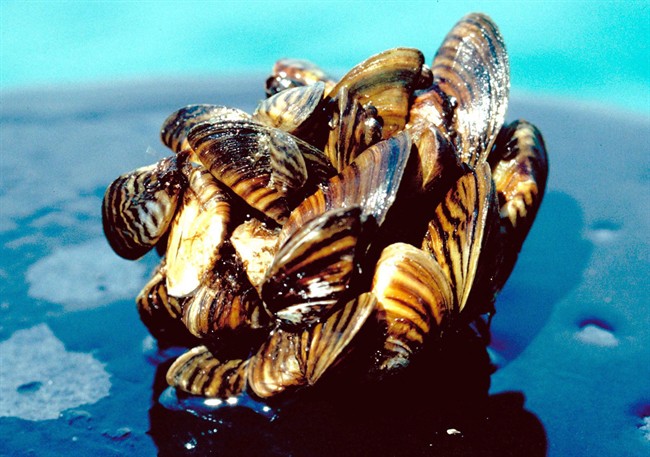Saskatchewan continues to remain free of invasive mussels.

The government said Tuesday that no zebra or quagga mussels were found in 90 bodies of water that were tested during 2017.
Zebra mussels and quagga mussels are almost impossible to eliminate if they become established in waterways and can severely impact aquatic habitats, fisheries, recreational resources and water-related infrastructures.
As part of its invasive mussels monitoring program, 1,212 inspections were carried out by Saskatchewan conservation officers of watercraft entering the province.
Detailed inspections were carried out on 307 watercraft and 119 required decontamination.

Get breaking National news
In 2016, 25 watercraft were decontaminated during inspections.
“Prevention is of the utmost importance,” Saskatchewan Environment Minister Dustin Duncan said in a release.
“Our government focuses on public awareness through education and targeted signage about our clean, drain, dry program, roadside boat inspections, decontaminations and regular monitoring of Saskatchewan’s busy waterbodies.”
Manitoba, North Dakota and Montana have all confirmed infestations of invasive mussels.
- Donald Trump claims B.C.’s ‘very large faucet’ could help California’s water woes
- Canada must speed up progress to hit its 2030 emissions target: report
- U.S. TikTok ban case pits free speech vs. national security. Which will win?
- A final, tragic text from doomed Titan sub revealed at Coast Guard hearing
Zebra mussel larva have previously been found in Cedar Lake, Man., which is part of the Saskatchewan River system.
The province has partnered with non-government organizations and other agencies to detect unwanted invasive mussels.
The Saskatchewan adult invasive mussel monitoring program (AIMM) is one tool now being used by the Ministry of Agriculture, the Ministry of Parks, Culture and Sport, SaskWater, watershed groups and the public for early detection.
The University of Saskatchewan used environmental DNA as a surveillance tool in 33 water samples. Ferries on the North and South Saskatchewan rivers were also checked.
The province has updated provincial regulations making it mandatory for people transporting boats to stop at an inspection station, with a $500 fine for those who fail to stop.
There is also a $500 fine for the illegal transportation of aquatic invasive species.






Comments